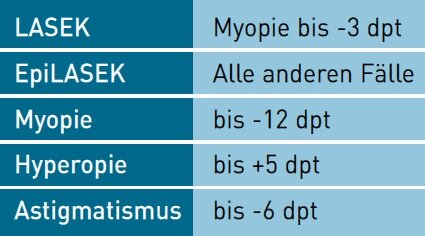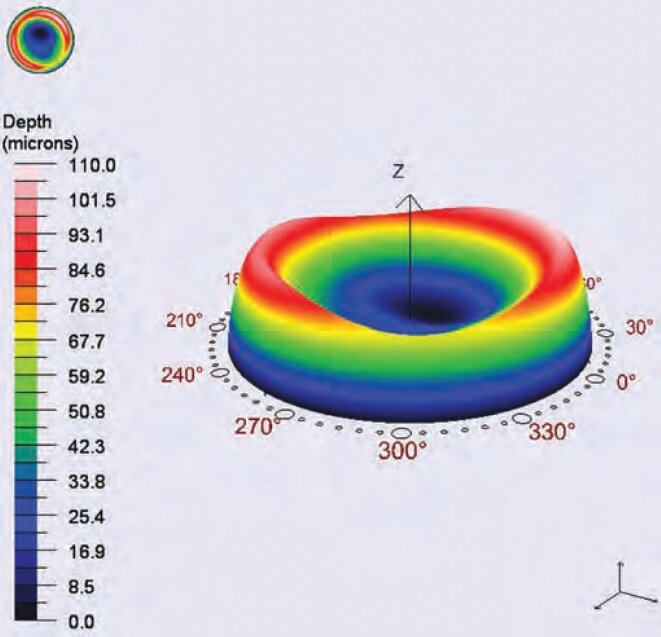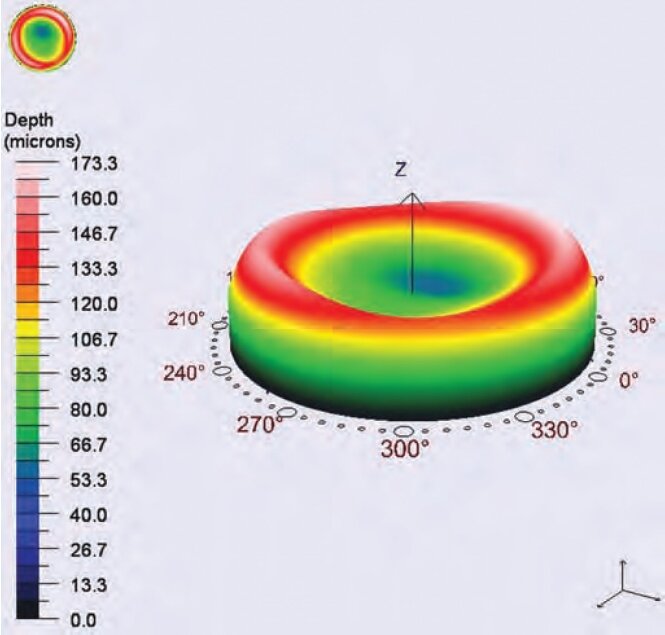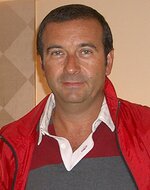He sees the advantages particularly in the high safety of these methods because no preparation of a corneal flap takes place, thus no enduring weakening of the cornea: “The treatments are in nearly every case painless. Quality of vision is restored within 10 days and remains stable over the long-term.“ In the following Dr. Camellin outlines his techniques and treatment ranges.
Treatment ranges
In myopia, a central residual corneal thickness of at least 350µm including the epithelium must be considered. The postoperative corneal curvature should be ≥ 32 D to ensure achievement of good vision quality.
The optical zone should normally be at least 7 mm and correspond with the mesopic pupil diameter; I never go below 6.5 mm. In hyperopia, an optical zone of 7.5 mm is preferred in order to minimize the risk of regression and possible halos at night. I never go below 7 mm. When necessary I protect the hinge with a spatula.
Additionally, the postoperative corneal curvature should be around 49 D, on the other side pay attention to preoperative very flat corneas (i.e. 40-42 D), because there might be a bad peripheral transition in case of high corrections (i.e. a significant step).
Corneal wavefront
I use corneal wavefront for hyperopia in combination with astigmatism in cases where the pupil centre differs more than 0.5 mm from the centre of the astigmatism (= corneal vertex). In this way, results and centration are improved. I also use corneal wavefront for all retreatments in order to eliminate higher order aberrations.
TransPRK
TransPRK in combination with corneal wavefront is my treatment of choice for retreatments after a radial keratectomy or transplants. I also use it for haze, scarred corneal tissue and for keratoconus after crosslinking. In keratoconus, I aim at minimizing the ablation of tissue and smoothing the existing astigmatism.
This method makes sense in all cases where a difficult epithelial flap is expected or where the epithelium covers corneal irregularities of the stromal tissue.
Special Medication
Autoserum is used in all cases in the first five postoperative days. Mitomycin C is diluted and applied with a merocel sponge:
- 0.02 % in TransPRK and retreatments over a time period of two minutes.
- 0.01 % for hyperopia and astigmatism more than 2 D (just a brushstroke) as well as for myopia more than 6 D.
- 0.005 % in all other cases (just a brushstroke). The surface is rinsed with a few drops of diclofenac. The usual administration of a larger amount of BSS is not necessary.




